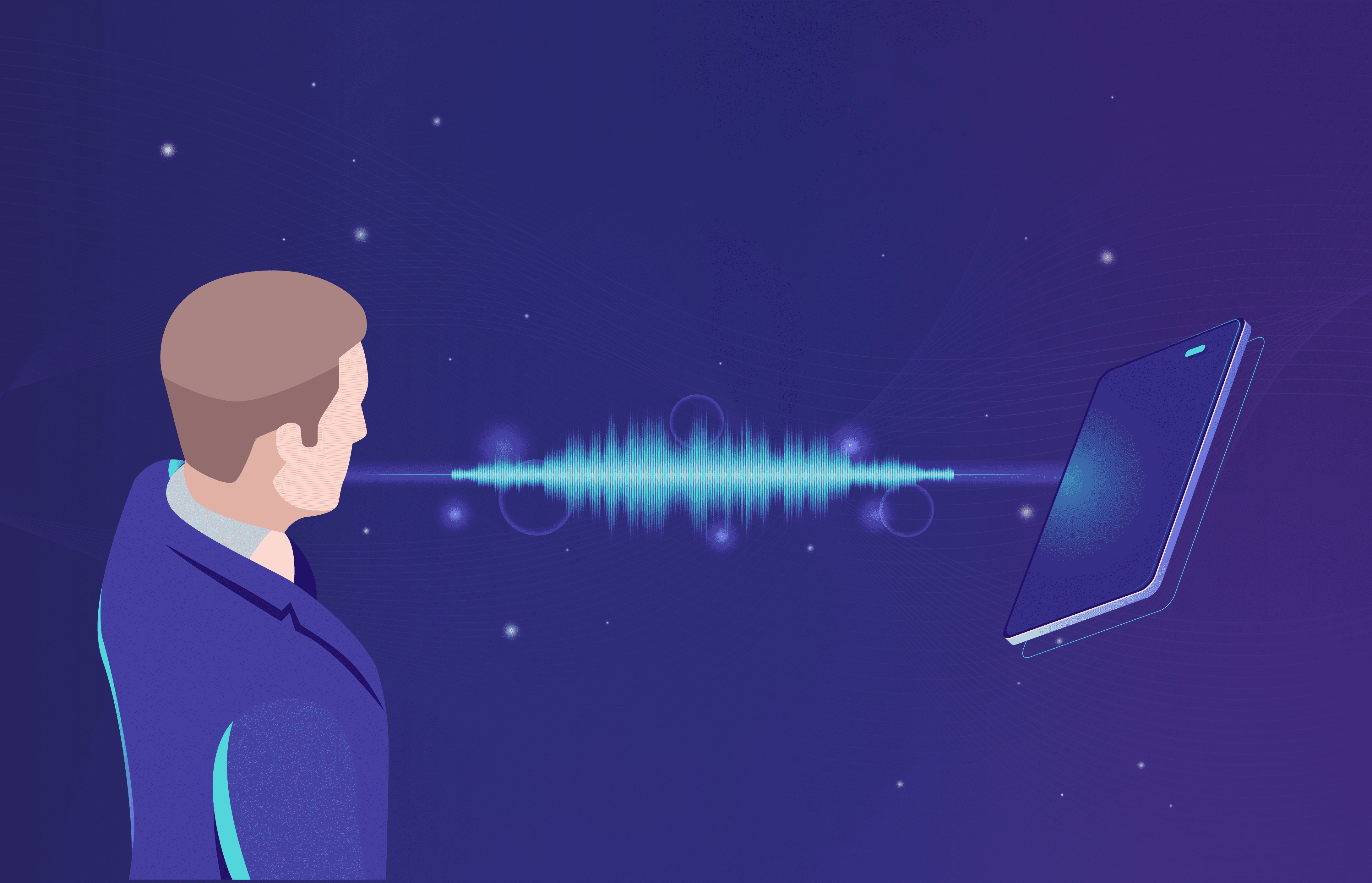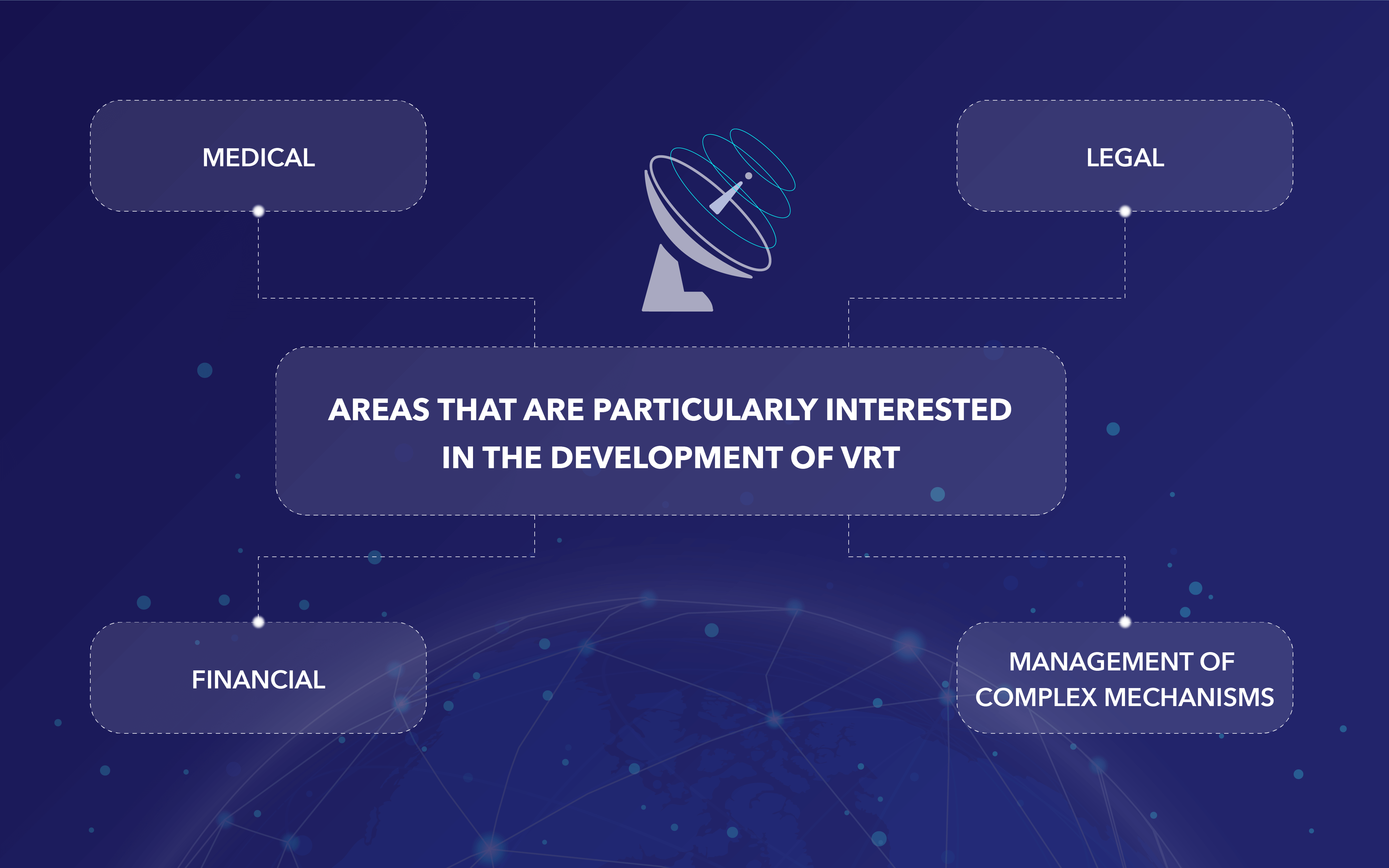In any modern science fiction film about the future, you will notice that the heroes communicate with the computer without the help of a keyboard, mouse, or any other additional devices. Considering the promising capabilities of modern technology, specifically Artificial Intelligence technology, we can confidently say that this will happen very soon. Actually, it’s already happening. Today specialists working in healthcare, military, and manufacturing sectors don’t longer need sci-fi movies to try voice recognition apps. They can use it for daily purposes.
Decreasing the risks of an error, increasing the effectiveness of the workflow, and reaching their goals faster!
What Is Voice Recognition Technology
Voice Recognition Technology is the ability of a computer to recognize human speech and execute simple commands or algorithms of actions.
The history of the development of speech recognition technology began in the 1980s when IBM introduced the first product in the world that was able to recognize consistent human speech. To continue developing and improving this technology, more powerful computers were needed, which did not exist at that time. And only in the 2000s Apple returned to this technology. And a few years later, Apple introduced us to the famous Siri, with the demonstration of which the boom in voice recognition technology began.

Multitasking is the primary goal of Voice Recognition Technology utilization. Namely, users installing voice checklist apps can give and follow the instructions, convey information, and write down thoughts without interruption from manual activity.
Voice recognition apps are used for personal purposes most often. A striking example of this is the incredible popularity of personal assistants such as Siri, Alex, Cortana, and others. But today, we want to discuss not just how to text “Good morning” to a girlfriend or how to turn on the light in the kitchen without the help of hands. Voice Recognition Technology can help in areas of human life that are characterized by risks and increased danger.
Industries Which Voice Recognition Apps Disrupt
- Voice Recognition in Healthcare
Healthcare is one of the most important areas of human life and the most dangerous because even the slightest mistake can lead to terrible consequences. It’s the sphere where every second matters. Yet speech recognition technology can provide quick and oral access to a large amount of information, which will positively affect medical manipulations.
This technology has the potential to create truly “background” products for use in the medical field. For example, voice recognition products can act as a scribe, clinical documentation assistants, and possibly a decision support tools. Also, if you save the doctor from filling a large amount of documentation, then they can see approximately x3 more patients.
- Voice Recognition in the Legal Sphere
Law enforcement’s duty is to effectively fulfill their duties on the streets, to quickly use all possible data, and at the same time to optimally use the resources of the state. Voice recognition apps help to quickly and, most importantly, accurately record and find any information that guarantees the fairness of the work of law enforcement agencies. By reducing the time for repetitive tasks, law enforcement officials will be able to spend more time on really important tasks that require a non-standard approach.
- Voice Recognition in Financial Sphere
The financial industry is characterized by lightning-fast changes. And to stay afloat, everyone in this industry should always be informed of the latest news. As voice technology develops, firms will be able to use voice assistants to automate the provision of financial planning advice, achieve investment goals, optimize liquidity management, portfolio rebalancing activities, and much more.
- Voice Recognition in Manufacturing
Modern manufacturing processes are risky and stressing, they require maximum concentration from employees. The employee’s attention to who is working with the complex equipment should be focused on what is happening, and the complexity and multifunctionality of the control panels are increasing every year.
Speech recognition technology will help to transfer many of the required commands into the oral type, which will drastically reduce the risks of emergency messages and increase the efficiency and speed of work.

Voice Controlled Checklists
Have you read “The Checklist Manifesto: How to Get Things Right?” by Atul Gawande?
The point is that despite multiple achievements, people still make mistakes, and sometimes it leads to terrible consequences. There are several factors that explain this, such as the huge stream of complex information that a person is not able to remember, excitement and stress, as well as banal carelessness. Humanity has accumulated such an enormous amount of information that it is unable to process it.
The author of the book found a solution that helps to avoid mistakes in the areas with organized activities. The panacea is simple – a checklist. In our case, it’s a voice checklist that can be even more effective.
A voice checklist helps a person to consistently complete the necessary work steps without missing anything important. Voice Recognition Technology allows users to listen to directions and verbally speak the steps performed. The system will recognize a person’s speech and move on to the next step.
You can talk about something hundreds of times, but it’s better to show it once. That is what we will do now. We would like to bring the Voice Controlled Checklist app for anesthesiologists to your attention.
The main value of the application is that it runs in the background, it means that the doctor is fully focused on the actions performed on the list, which he/she simply hears, and does not hold the device in his hands or look at the screen. This voice checklist is 100% managed by a doctor’s voice.

The advantage is that the application is not dependent on the Internet or even Wi-Fi. Work in the operating room can be performed offline if the list has been downloaded in advance. Thus, the patient’s safety cannot be compromised in the event of an intermittent signal.
It is also convenient to change the application for the specifics of work and even the patient. The list can be modified, shortened, or even written from scratch by a doctor. Also, the lists are easy to adapt to colleagues or patients, taking into account the peculiarities of their organized or medical history. This function significantly increases safety and confidence in the quick adaptation of the patient after surgery.
And, of course, a convenient and understandable UX that fits everyone. The application works on the Android and iOS platforms, which allows the specialist to have this checklist at his fingertips.
Conclusion
Any know-how in development is aimed at only one thing – increasing the efficiency of our work and our environment. This is especially true for industries that are associated with risky activities, where any mistake has a high price. The advantages of speech recognition technology are undeniable, as well as the fact that the future of risk reduction methods will certainly be associated with this technology.




